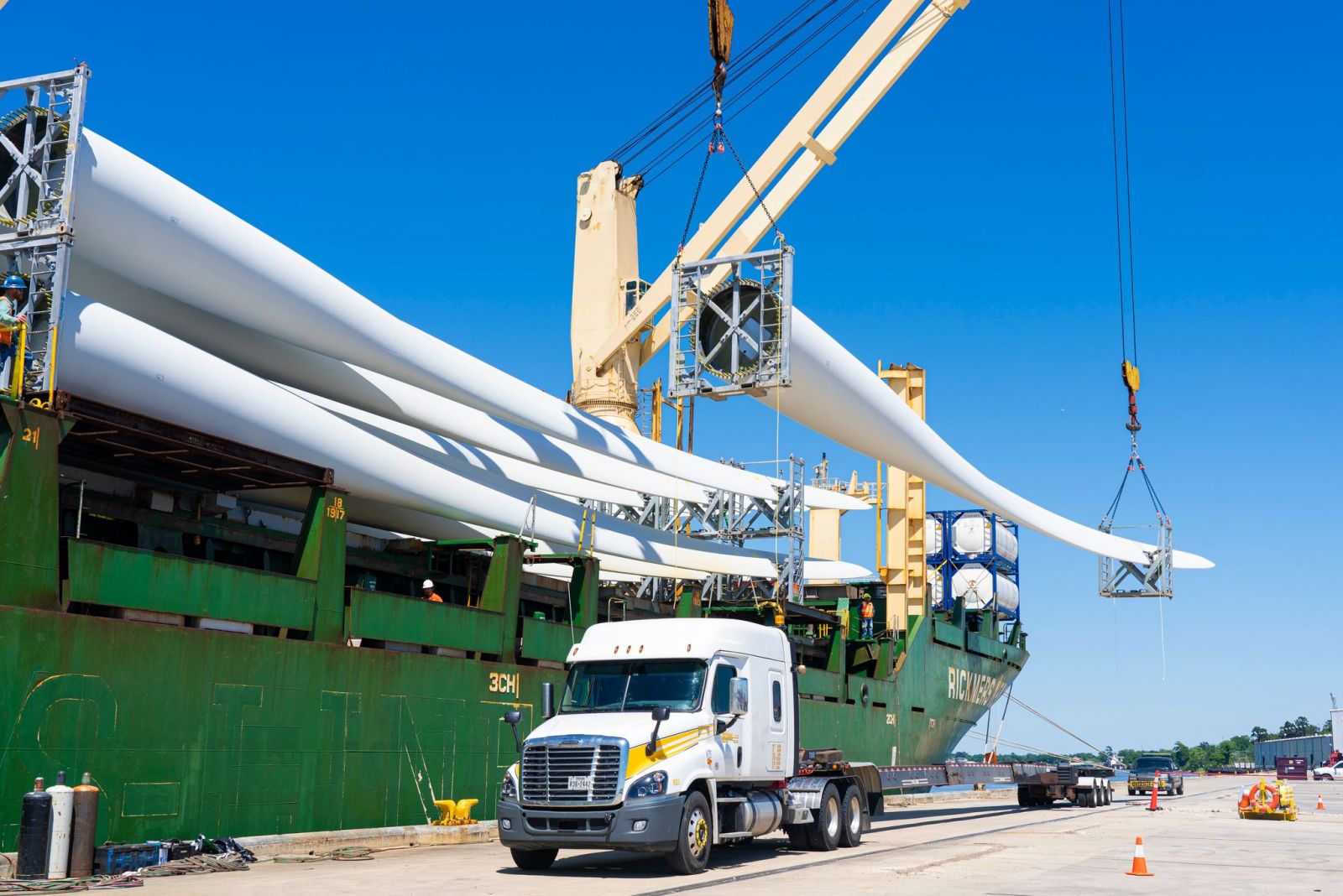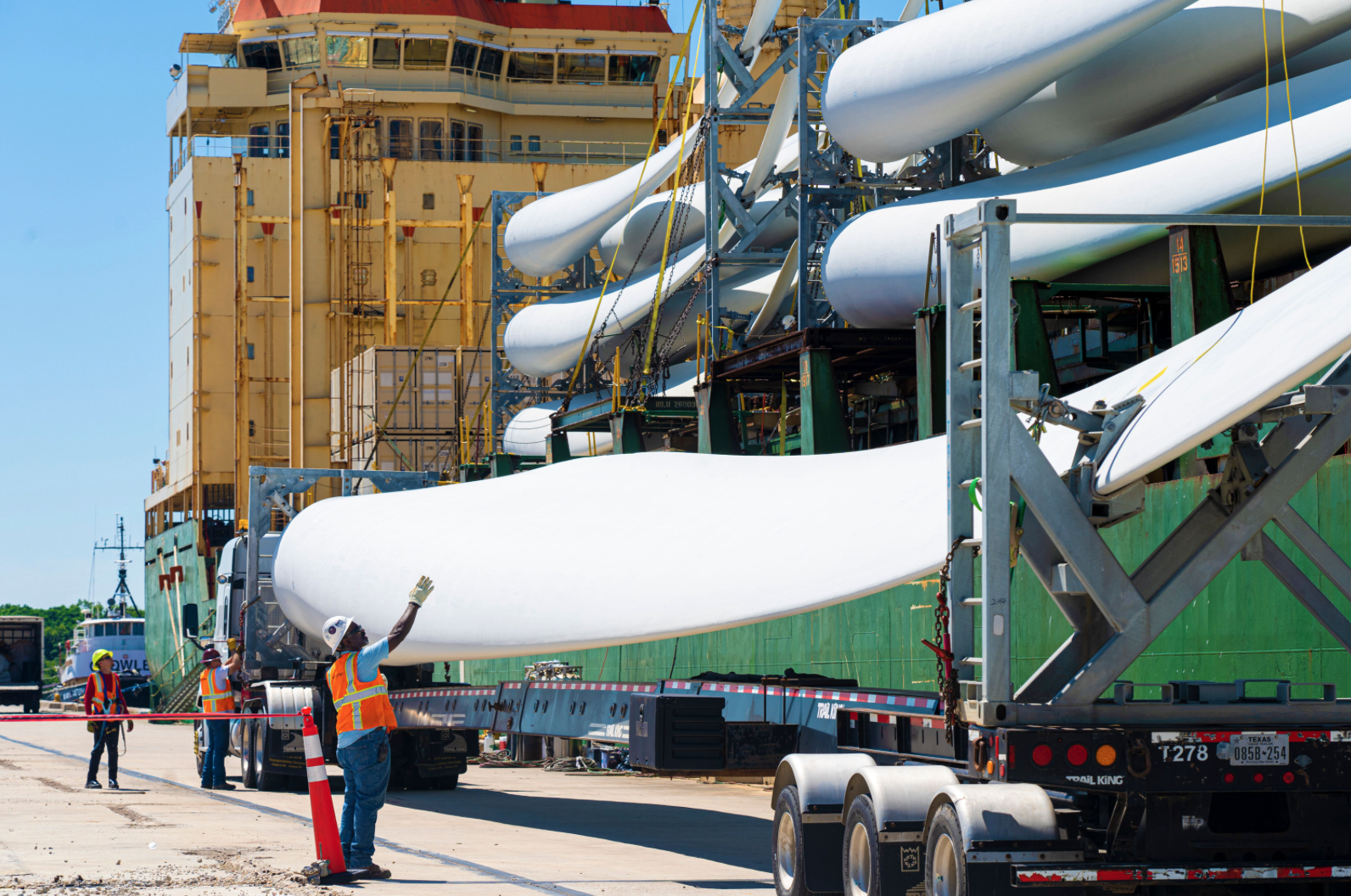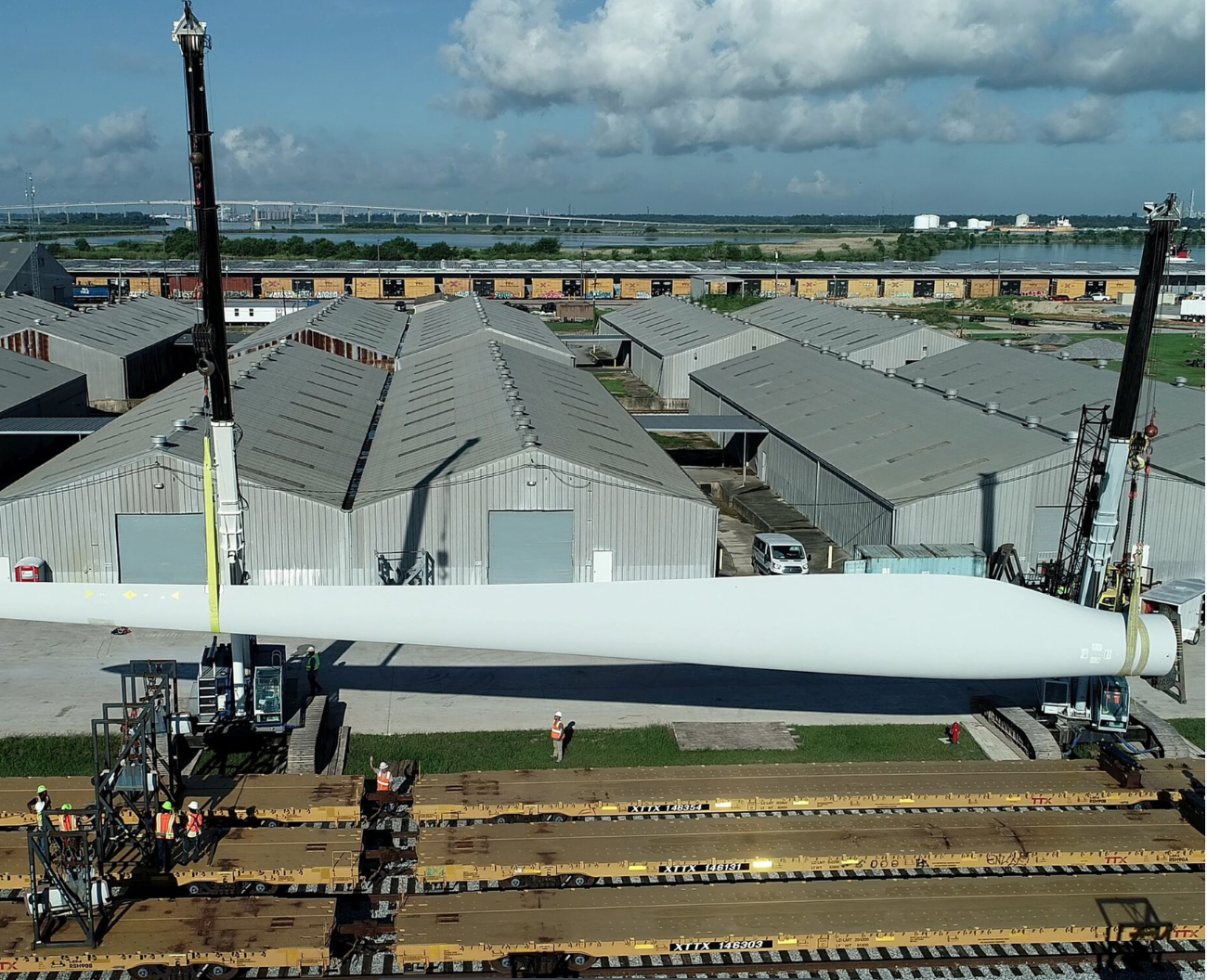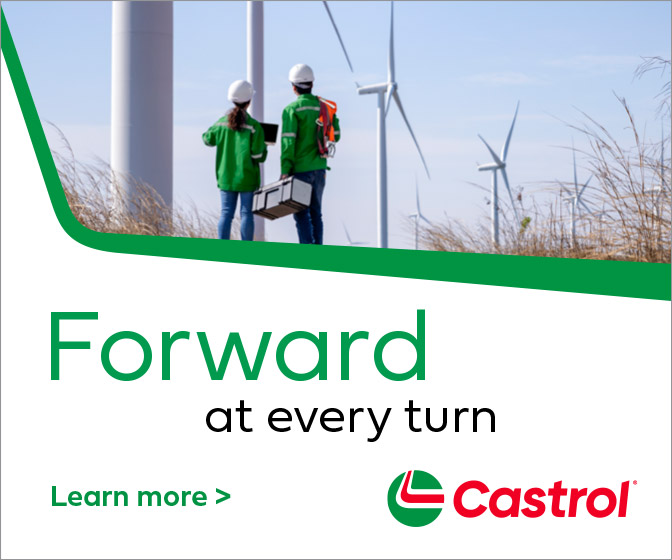Port of Opportunity: Lake Charles, anchor of oil-and-gas country, also helps advance renewable energy in America
Wind turbine blades are a major cargo at the Port of Lake Charles, which handles the components after they enter Louisiana's coast from the Gulf of Mexico and head up the Calcasieu Ship Channel.
After a long tradition of serving as a national oil-and-gas corridor, Louisiana's Port of Lake Charles has taken on a new role: serving America's power-generation future.
The biggest change? The arrival of huge new cargo items that can make even the more seasoned longshore workers stop and stare. They are, of course, the giant blades needed to power the wind turbines for one of the nation's booming renewable power sources: wind energy.

It's an item that many ports aren't able to move, yet the Port of Lake Charles now handles shipments of these blades with growing regularity. It's the latest example of how Lake Charles can handle cargo that's beyond the capabilities of other ports. The Port of Lake Charles now handles more than 900 blades annually. Last year, it added tower components - three sections, 80 tons each, that are assembled into towers upon reaching their destination.
It's a swift evolution from handling 591 blades in the inaugural year in 2019. It's also testament to the ability to grow wind turbine business even in a crisis. Louisiana was hit by Hurricane Laura, its strongest storm in 150 years, and Lake Charles took a direct hit. The Port of Charles sustained multimillion-dollar damage, yet resumed operations, including the handling of blades, within a week of the storm.
Handle With Care
Wind turbine blades arriving at the Port of Lake Charles measure 144 feet long and weigh about 11 tons each. The sizes vary, but they're all massive - so they require considerable space for handling when they arrive at the Port.
Once dockside, the blades are carefully unloaded at the port's City Docks, where general breakbulk cargo is handled. The handling of the blades shows how the port moves cargoes that have ever-more-specialized shipping demands. For example, one recent load of blades was shipped out by Port Rail (the on-site short line railroad) after arriving at Berth 2 of the City Docks.

For each load, the blades are placed on special double-length rail cars for delivery (think of big-city buses that flex in the middle to handle turns). From there, they are carefully moved by train or truck to destinations inland.
One destination of these blades was a wind farm in Iowa, a state which generates 40 percent of its power from wind - the highest rate in the nation. Other blades went to Texas, which currently leads the U.S. in wind-power capacity.
Once delivered, the blades are assembled onto a power generator atop a steel tower which reaches nearly half the height of the Eiffel Tower. These towering, power-generating machines increasingly dot the landscape of the American homeland.
The unusually large components are also a frequent and eye-catching sight by motorists in Lake Charles during local commutes that intersect the rail route.
Looking Ahead
The Port's future-minded capabilities for handling specialty breakbulk and project cargoes continue to gain local, national, and global attention.

Nicknamed "America's Energy Corridor," the Calcasieu Ship Channel at Lake Charles boasts a nearly century-long history, during which it has served the lumber, rice, petrochemical, and LNG industries. It continues serving these sectors, along with the additional capacity to handle the specialized equipment necessary to expand wind power across the country.
Renewable energy is a new and major area of growth for the facility. Part of a $200 million capital improvement plan spanning five years, the demolition of two antiquated warehouses, and the expansion of a rail yard to its City Docks facilities in 2018, the Port of Lake Charles is currently able to accept the leviathan components and blades that America's wind industry demands.
This year, the Port of Lake Charles will handle even larger blades and tower components. This growth bodes well for a port that's a fixture in America's traditional oilpatch, and a renewed gateway to its greener energy future.
Brett Downer is former editor of the Lake Charles American Press and editor at Newsradio 740 KTRH of Houston.
Port of Lake Charles | portlc.com
Author: Brett Downer
Volume: 2021 January/February









.jpg?r=4140)


